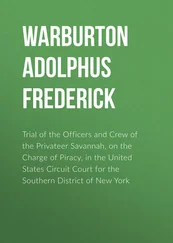Comets are a similar example of spectacular astronomical phenomena that ancient people commonly regarded as supernatural omens but science has since described in natural terms, that is, with purely material models. In the seventeenth century, Edmund Halley (d. 1742) used the mechanical theories developed by his friend Isaac Newton (d. 1727) to predict that a comet seen in 1682 would return in 1759. Indeed it did, after Halley’s death, and has done so every seventy-six years since. Most comets appear unexpectedly, having such extended orbits that they have spent human history outside our view. However, records indicate that Halley’s comet has appeared perhaps twenty-nine times in history.
In more recent times, other astronomical phenomena have occurred unexpectedly and could not be immediately understood. These include pulsars, supernovas, quasars, and gamma-ray bursts. But, as with other examples, these phenomena eventually repeated in one way or another, in time or in space. This allowed us to learn enough to eventually understand their nature in purely physical terms.
At no time and at no place in the sky have we run across an event above the noise that did not repeat sometime or someplace and could not be accounted for in terms of established natural science. We have yet to encounter an observable astronomical phenomenon that requires a supernatural element o be added to a model in order to describe the event. In fact, we have no cosmic phenomenon that meets the Swinburne criterion for a miracle. A God who plays a sufficiently active role to produce miraculous events in the cosmos has not been even glimpsed at by our best astronomical instruments to date. Observations in cosmology look just as they can be expected to look if there is no God.
Where Do the Laws of Physics Come From?
We have seen that the origin and the operation of the universe do not require any violations of laws of physics. This probably will come as a surprise to the layperson who may have heard otherwise from the pulpit or the media. However, the scientifically savvy believer might concede this point for the sake of argument and then retort, “Okay, then where did the laws of physics come from?” The common belief is that they had to come from somewhere outside the universe. But that is not a demonstrable fact. There is no reason why the laws of physics cannot have come from within the universe itself.
Physicists invent mathematical models to describe their observations of the world. These models contain certain general principles that have been traditionally called “laws” because of the common belief that these are rules that actually govern the universe the way civil laws govern nations. However, as I showed in my previous book, The Comprehensible Cosmos, the most fundamental laws of physics are not restrictions on the behavior of matter. Rather they are restrictions on the way physicists may describe that behavior. [56] 25. Stenger, The Comprehensible Cosmos.
In order for any principle of nature we write down to be objective and universal, it must be formulated in such a way that it does not depend on the point of view of any particular observer. The principle must be true for all points of view, from every “frame of reference.” And so, for example, no objective law can depend on a special moment in time or a position in space that may be singled out by some preferred observer.
Suppose I were to formulate a law that said that all objects move naturally toward me. That would not be very objective. But this was precisely what people once thought—that Earth was the center of the universe and the natural motion of bodies was toward Earth. The Copernican revolution showed this was wrong and was the first step in the gradual realization of scientists that their laws must not depend on frame of reference.
In 1918 mathematician Emmy Noether proved that the most important physical laws of all—conservation of energy, linear momentum, and angular momentum—will automatically appear in any model that does not single out a special moment in time, position in space, and direction in space. [57] 26. E. Noether, “Invarianten beliebiger Differentialausdrücke,” Nachr. d. König. Gesellsch. d. Wiss. zu Göttingen, Math-phys. Klasse (1918): 37–44; Nina Byers, “E. Noether’s Discovery of the Deep Connection between Symmetries and Conservation Laws,” Israel Mathematical Conference Proceedings 12 (1999), http://www.physics.ucla.edu/~cwp/articles/noether.asg/noether.html (accessed July 1, 2006). This contains links to Noether’s original paper including an English translation.
Later it was realized that Einstein’s special theory of relativity follows if we do not single out any special direction in four-dimensional space-time.
These properties of space-time are called symmetries. For example, the rotational symmetry of a sphere is a result of the sphere singling out no particular direction in space. The four space-time symmetries described above are just the natural symmetries of a universe with no matter, that is, a void. They are just what they should be if the universe appeared from an initial state in which there was no matter—from nothing.
Other laws of physics, such as conservation of electric charge and the various force laws, arise from the generalization of space-time symmetries to the abstract spaces physicists use in their mathematic models. This generalization is called gauge invariance, which is likened to a principle I more descriptively refer to as point-of-view invariance.
The mathematical formulations of these models (which are provided in The Comprehensible Cosmos) must reflect this requirement if they are to be objective and universal. Surprisingly, when this is done, most of the familiar laws of physics appear naturally. Those that are not immediately obvious can be seen to plausibly arise by a process, known as spontaneous symmetry breaking.
So where did the laws of physics come from? They came from nothing! Most are statements composed by humans that follow from the symmetries of the void out of which the universe spontaneously arose. Rather than being handed down from above, like the Ten Commandments, they look exactly as they should look if they were not handed down from anywhere. And this is why, for example, a violation of energy conservation at the beginning of the big bang would be evidence for some external creator. Even though they invented it, physicists could not simply change the “law.” It would imply a miracle or, more explicitly, some external agency that acted to break the time symmetry that leads to conservation of energy. But, as we have seen, no such miracle is required by the data.
Thus we are justified in applying the conservation laws to the beginning of the big bang at the Planck time. At that time, as we saw earlier in this chapter, the universe had no structure. That meant that it had no distinguishable place, direction, or time. In such a situation, the conservation laws apply.
Now, this is certainly not a commonly understood view. Normally we think of laws of physics as part of the structure of the universe. But here I am arguing that the three great conservation laws are not part of any structure. Rather they follow from the very lack of structure at the earliest moment.
No doubt this concept is difficult to grasp. My views on this particular issue are not recognized by a consensus of physicists, although I insist that the science I have used is well established and conventional. I am proposing no new physics or cosmology but merely providing an interpretation of established knowledge in those fields as it bears on the question of the origin of physical law, a question few physicists ever ponder.
I must emphasize another important point, which has been frequently misunderstood. I am not suggesting that the laws of physics can be anything we want them to be, that they are merely “cultural narratives,” as has been suggested by authors associated with the movement called postmodernism. [58] 27. Walter Truett Anderson, The Truth About the Truth (New York: Jeremy P. Tarcher/Putnam, 1996).
They are what they are because they agree with the data.
Читать дальше












